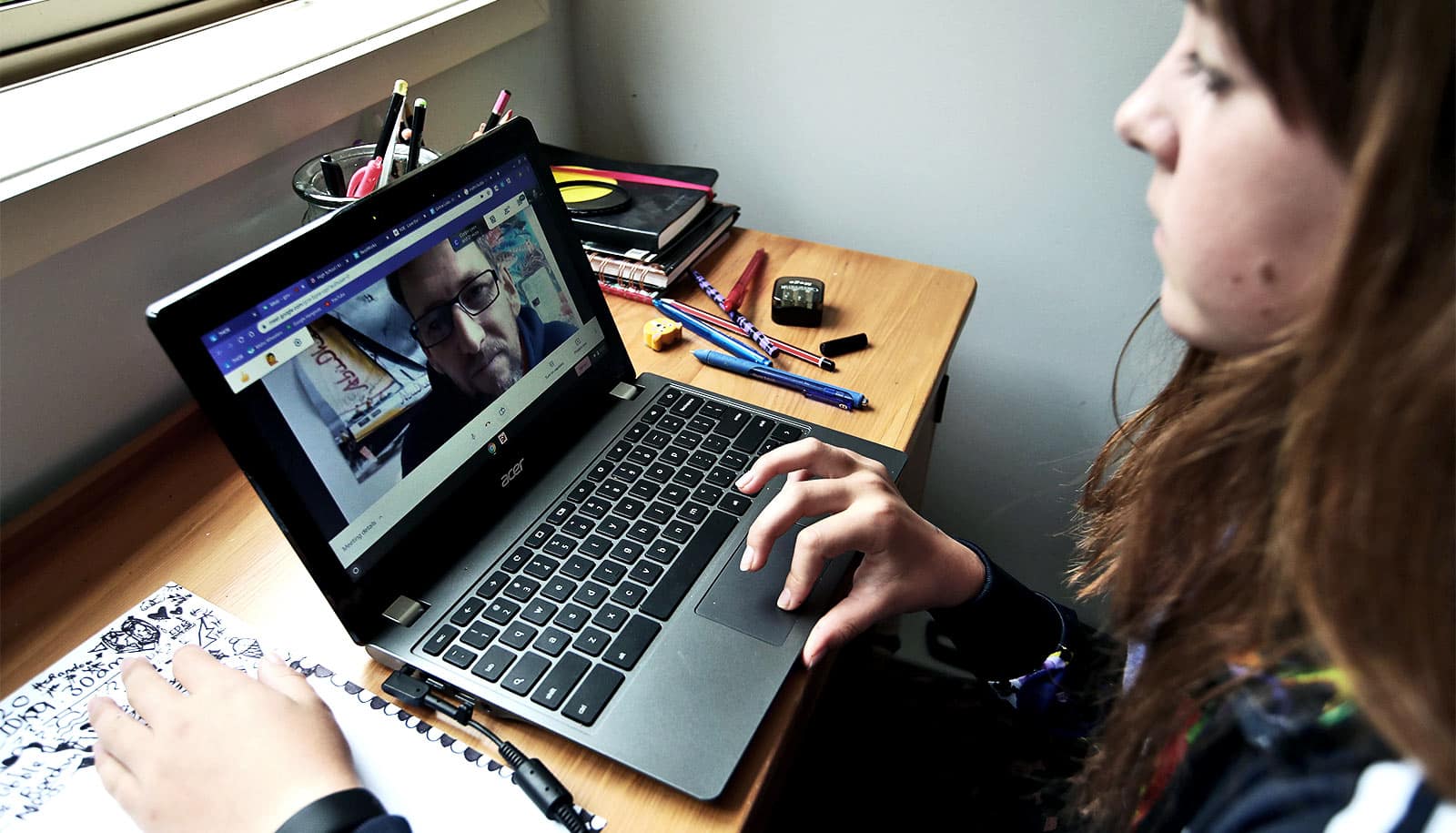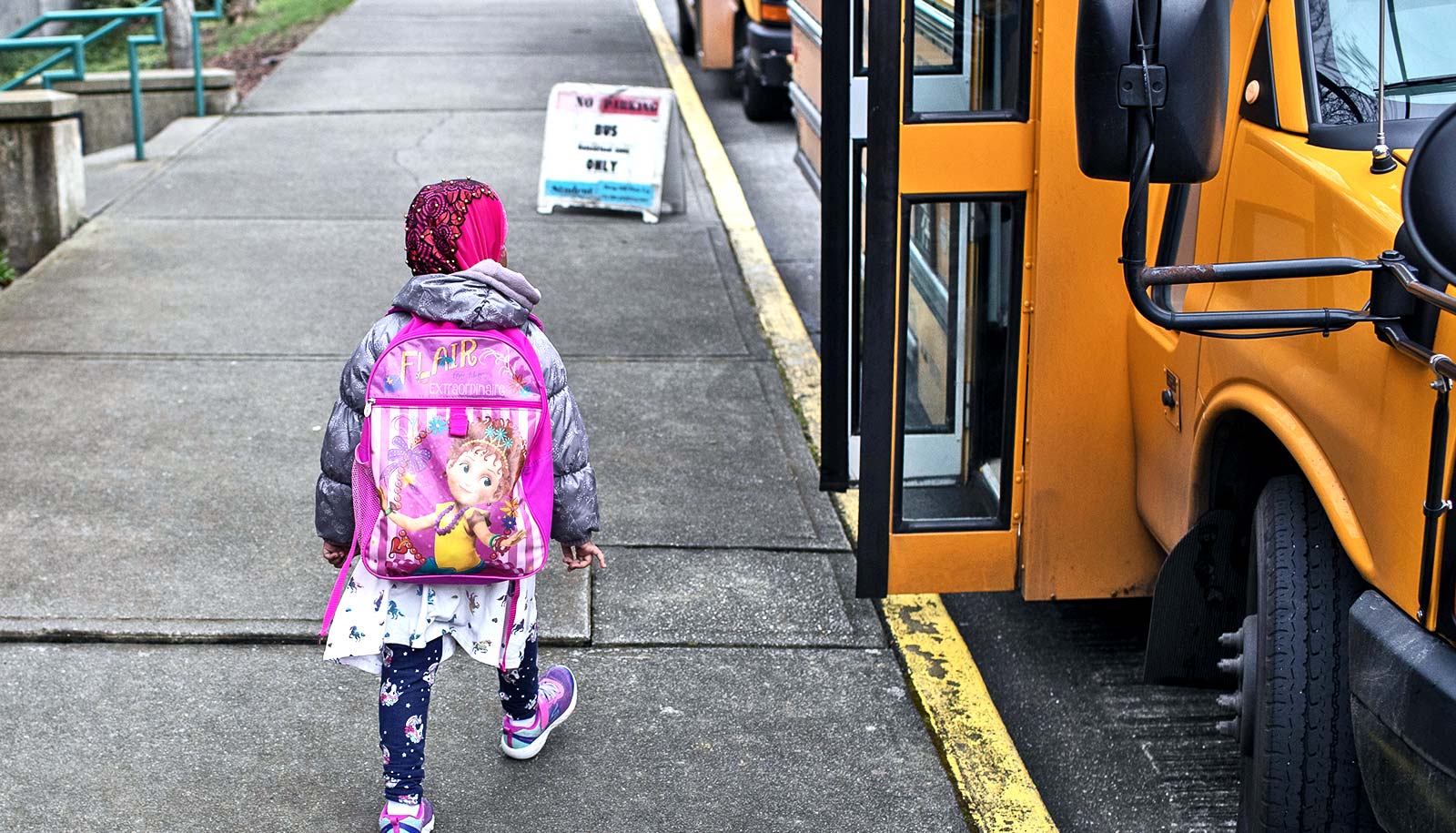As teachers struggle to optimize their digital instruction during the COVID-19 crisis, an expert offers five tips for how to implement effective online instruction.
Doing digital instruction properly is no piece of cake, says Helle Mathiasen, a professor at the natural sciences didactics department at the University of Copenhagen, and an expert in digital media and learning.
“It is clear that in this corona-era, we are engaged in a learning experiment. Many teachers have never attempted to teach online. They are driving race cars while the road is still being paved. This can have implications for the learning outcomes of students of all ages,” she says.
Here are Mathiasen’s top-five tips for teachers now teaching online:
1. Be structured
When using digital platforms like Zoom or Teams for instruction, it is essential that pupils and students understand what they’re participating in, when to do what—and why. It is imperative that they experience a clear framework and teaching structure.
“As a point of departure, keep to a tight schedule for each lesson,” Mathiasen says. “For example, at 9 AM there is an explanation of the day’s learning objectives, during which students have the opportunity to ask questions. At 9:15 AM, the assignment is presented before students head into digital group rooms at 9:25 AM and work together until 10. Thereafter, a recap can take place in a class-wide plenary.”
2. Meet expectations
In order for online instruction to be successful, it is important that everyone is included in the terms of instruction and accepts the premise of being taught in new ways via the internet. It is vital for pupils and students to feel that they have a say and are included.
Mathiasen points out that establishing mutual expectations is best achieved if you explain the purpose of your instruction.
“When students understand what the point of instruction is, it is often easier for them to find meaning in spending time and energy on tasks,” she says.
3. Check in
According to Mathiasen, when coronavirus-era students don’t get “hello hugs” from their peers, it is crucial to begin lessons with everyone saying hello.
“A quick hello from every student needn’t take more than ten seconds each, and time must be set aside for this in the day’s lesson plan. But it is of great importance to the community and for motivation when everyone feels seen and heard as much as possible. Doing so makes everyone feel more included and a part of the community,” she says.
In addition, it is best if you turn on your webcam so that you can see everyone on video, or at least have a picture of yourself to amplify the feeling of a community.
4) Vary your instruction
The key to keeping pupils and students engaged during several hours of online instruction is variety, Mathiasen says. For example, lengthy monologues and lectures are a “no go.”
“Lectures where the teacher simply talks should generally be limited to a maximum of 15 minutes—students cannot concentrate beyond that. Vary instruction by way of group work, where students are split up and discuss their assignments in another online forum. Also, include assignments where they must work individually—for 20 minutes, for example—before conducting a joint recap in plenary,” she suggests.
5. Drop quizzes without follow-up and involve students
As her final point, Mathiasen is keen to focus on the importance of involving pupils and students, and remembering to follow up on assignments. In doing so, she questions the learning outcome of widely used digital quizzes such as Kahoot and Clickers, where students answer instructor-created questions about material.
“When using quizzes in the classroom, it is important that pupils and students have the opportunity to discuss their suggestions—either in groups or in plenary, with the teacher. Without discussion, there is no rationale for students’ answers, and without follow-up, we run the risk that the understanding of why an answer was right or wrong will be completely evaded. Learning and communication are tightly bound,” she says.
Overall, Mathiasen is “very impressed” with how many instructors have thrown themselves wholeheartedly into online instruction without having any experience in doing so previously.
She hopes that in the wake of the coronavirus crisis, we will have all been reminded of the importance of developing instructional skills in digital learning environments, and be able to assess and justify the opportunities and limitations of digital technologies.
Source: University of Copenhagen



